As the automotive industry continues to evolve, the demand for luxury SUVs has surged. Among the most notable contenders in this segment are the Volvo XC90 and the VW Touareg. Both vehicles offer a blend of performance, comfort, and cutting-edge technology, making them attractive choices for discerning buyers. In this article, we will compare the two models across various aspects including technical specifications, innovations, and overall driving experience.
Volvo XC90 vs VW Touareg – Which one offers the better deal?
Everyday use, family trips or long-distance drives – here’s where the differences show.
Discover whether Volvo XC90 or VW Touareg fits your lifestyle better.
Performance and Engine Options
The 2024 Volvo XC90 offers drivers a choice of innovative powertrains with its petrol mild-hybrid and plug-in hybrid options, providing an output ranging from 250 HP to a robust 455 HP. The XC90 showcases impressive acceleration metrics, reaching 0 to 100 km/h in 7.7 seconds for the base model and just 5.4 seconds for the top-of-the-line variant. In contrast, the 2023 VW Touareg boasts a variety of engine choices, including diesel and petrol options, with power outputs extending from 231 HP to 340 HP. The Touareg's acceleration is competitive, achieving 0 to 100 km/h in as little as 6.1 seconds.
Fuel Efficiency and Environmental Impact
The Volvo XC90 demonstrates remarkable fuel efficiency, especially with its hybrid configurations, achieving a fuel consumption rate as low as 1.2 L/100 km in plug-in mode and 8.5 L/100 km for traditional use. This environmentally conscious design translates to a CO2 emission range of just 30 to 191 g/km. Conversely, the VW Touareg has a slightly higher fuel consumption profile ranging from 8 to 11 L/100 km, with CO2 emissions clocking in between 210 to 249 g/km. For eco-conscious consumers, the XC90's hybrid models provide a significant advantage in both consumption and emissions.
Dimensions and Interior Space
When it comes to size, the XC90 measures 4953 mm in length, 1923 mm in width, and 1771 mm in height, while offering a spacious trunk capacity ranging from 262 to 302 liters, depending on configuration. The interior comfortably accommodates up to seven passengers, making it ideal for families. On the other hand, the VW Touareg is slightly shorter at 4902 mm in length and wider at 1984 mm with a height of 1712 mm. The Touareg excels in storage with a trunk capacity of 810 liters, providing ample room for luggage or gear, although it only seats five individuals.
Driving Dynamics and Comfort
Both vehicles come standard with all-wheel drive, enhancing their capability to tackle various terrains and weather conditions. The XC90 offers a smooth and comfortable ride with its advanced suspension system tuned for comfort, making it a perfect choice for long-distance travel. In contrast, the VW Touareg impresses with a more dynamic drive, demonstrating agility and responsiveness that appeals to those looking for a sportier experience. The higher top speeds (up to 250 km/h) are an added advantage for enthusiasts who appreciate a thrilling ride.
Technology and Innovations
Both the Volvo XC90 and the VW Touareg are equipped with state-of-the-art technology and safety features. The XC90 stands out with its focus on driver assistance systems, including adaptive cruise control, lane-keeping assistance, and advanced emergency braking features that emphasize passenger safety. Additionally, Volvo's Sensus infotainment system offers an intuitive interface that integrates seamlessly with smartphones.
Similarly, the VW Touareg includes a wide range of technological amenities such as a digital cockpit, a premium sound system, and an array of driver assistance features like traffic jam assist and predictive adaptive cruise control. The infotainment system is user-friendly, and the large touch screen enhances the driving experience.
Conclusion
Both the Volvo XC90 and VW Touareg assert themselves as leading contenders in the luxury SUV market, catering to different preferences and requirements. The XC90 emphasizes efficiency, family capacity, and advanced safety technologies, making it ideal for those who prioritize these elements. The Touareg, with its powerful engine choices and dynamic handling, appeals to buyers seeking performance and sophistication. Ultimately, the choice between these two SUVs will depend on individual priorities, but either option promises a blend of luxury and capability that is hard to resist.
Here’s where it gets real: The technical differences in detail
Costs and Efficiency:
Price and efficiency are often the first things buyers look at. Here it becomes clear which model has the long-term edge – whether at the pump, the plug, or in purchase price.
VW Touareg has a slightly advantage in terms of price – it starts at 63200 £, while the Volvo XC90 costs 69800 £. That’s a price difference of around 6535 £.
Fuel consumption also shows a difference: VW Touareg manages with 2.20 L and is therefore convincingly more efficient than the Volvo XC90 with 3.50 L. The difference is about 1.30 L per 100 km.
As for range, the Volvo XC90 performs distinct better – achieving up to 71 km, about 20 km more than the VW Touareg.
Engine and Performance:
Under the bonnet, it becomes clear which model is tuned for sportiness and which one takes the lead when you hit the accelerator.
When it comes to engine power, the VW Touareg has a minimal edge – offering 462 HP compared to 455 HP. That’s roughly 7 HP more horsepower.
In acceleration from 0 to 100 km/h, the VW Touareg is hardly perceptible quicker – completing the sprint in 5.10 s, while the Volvo XC90 takes 5.40 s. That’s about 0.30 s faster.
In terms of top speed, the VW Touareg performs noticeable better – reaching 250 km/h, while the Volvo XC90 tops out at 180 km/h. The difference is around 70 km/h.
There’s also a difference in torque: Volvo XC90 pulls barely noticeable stronger with 709 Nm compared to 700 Nm. That’s about 9 Nm difference.
Space and Everyday Use:
Beyond pure performance, interior space and usability matter most in daily life. This is where you see which car is more practical and versatile.
Seats: Volvo XC90 offers evident more seating capacity – 7 vs 5.
In curb weight, VW Touareg is hardly perceptible lighter – 2059 kg compared to 2080 kg. The difference is around 21 kg.
In terms of boot space, the VW Touareg offers decisively more room – 810 L compared to 302 L. That’s a difference of about 508 L.
In maximum load capacity, the Volvo XC90 performs slight better – up to 1856 L, which is about 56 L more than the VW Touareg.
When it comes to payload, VW Touareg hardly perceptible takes the win – 751 kg compared to 710 kg. That’s a difference of about 41 kg.
Who wins the race?
The VW Touareg proves to be outperforms in nearly all aspects and therefore becomes our DriveDuel Champion!
VW Touareg is the better all-rounder in this comparison.
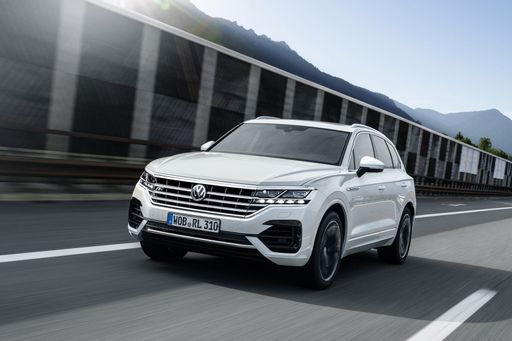 @ Volkswagen AG / VW Media
@ Volkswagen AG / VW Media
VW Touareg
Volvo XC90
The Volvo XC90 stands out with its elegant Scandinavian design, seamlessly blending luxury with versatility. Inside, it offers a spacious and meticulously crafted interior, showcasing high-quality materials and advanced technology. The vehicle provides a comfortable and smooth driving experience, making it a popular choice for families and long journeys.
details @ Volvo Cars
@ Volvo Cars
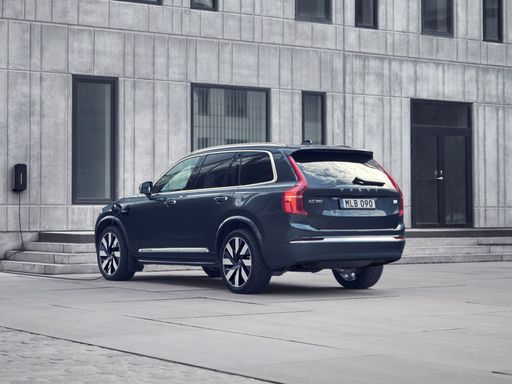 @ Volvo Cars
@ Volvo Cars
 @ Volvo Cars
@ Volvo Cars
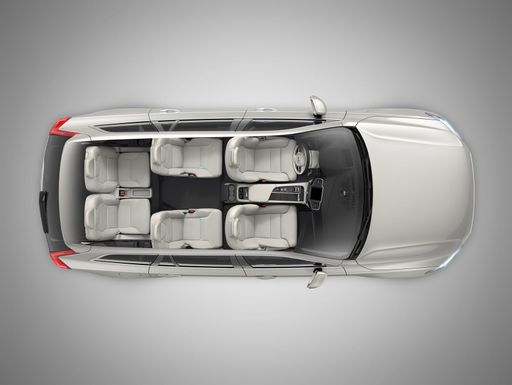 @ Volvo Cars
@ Volvo Cars
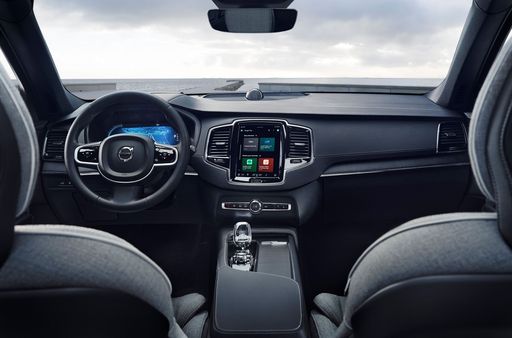 @ Volvo Cars
@ Volvo Cars
VW Touareg
The VW Touareg stands out in the luxury SUV market with its blend of sophisticated design and advanced technology. Its interior exudes an air of refinement, featuring premium materials and state-of-the-art infotainment systems. On the road, the Touareg offers a smooth and dynamic driving experience, effortlessly combining power and precision handling.
details @ Volkswagen AG / VW Media
@ Volkswagen AG / VW Media
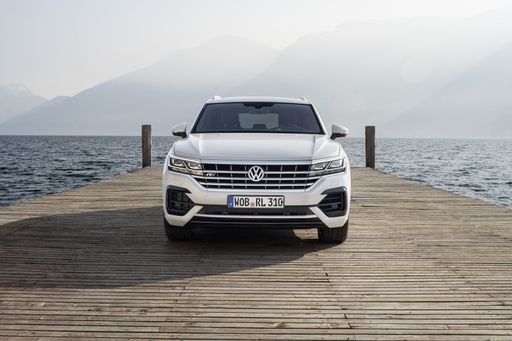 @ Volkswagen AG / VW Media
@ Volkswagen AG / VW Media
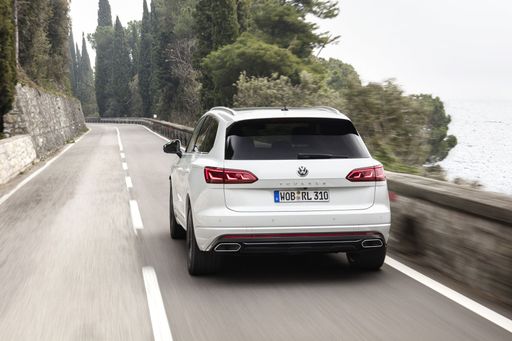 @ Volkswagen AG / VW Media
@ Volkswagen AG / VW Media
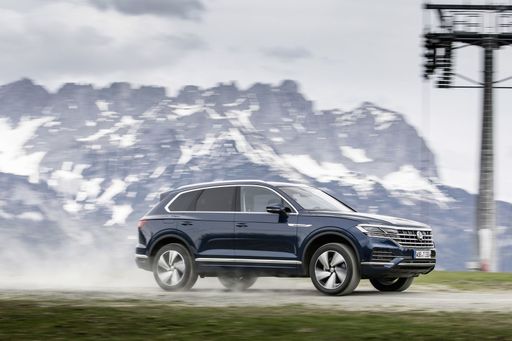 @ Volkswagen AG / VW Media
@ Volkswagen AG / VW Media
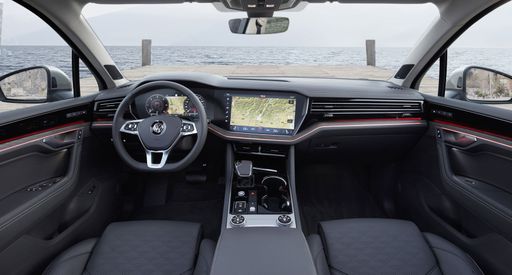 @ Volkswagen AG / VW Media
@ Volkswagen AG / VW Media
 @ Volvo Cars
@ Volvo Cars
|
 @ Volkswagen AG / VW Media
@ Volkswagen AG / VW Media
|
|
|
|
Costs and Consumption |
|
|---|---|
|
Price
69800 - 84600 £
|
Price
63200 - 86000 £
|
|
Consumption L/100km
3.5 - 8.5 L
|
Consumption L/100km
2.2 - 10.5 L
|
|
Consumption kWh/100km
-
|
Consumption kWh/100km
-
|
|
Electric Range
71 km
|
Electric Range
48 - 51 km
|
|
Battery Capacity
14.70 kWh
|
Battery Capacity
14.30 kWh
|
|
co2
79 - 191 g/km
|
co2
48 - 239 g/km
|
|
Fuel tank capacity
71 L
|
Fuel tank capacity
75 L
|
Dimensions and Body |
|
|---|---|
|
Body Type
SUV
|
Body Type
SUV
|
|
Seats
7
|
Seats
5
|
|
Doors
5
|
Doors
5
|
|
Curb weight
2080 - 2297 kg
|
Curb weight
2059 - 2470 kg
|
|
Trunk capacity
262 - 302 L
|
Trunk capacity
665 - 810 L
|
|
Length
4953 mm
|
Length
4878 - 4902 mm
|
|
Width
1923 mm
|
Width
1984 mm
|
|
Height
1771 mm
|
Height
1693 - 1712 mm
|
|
Max trunk capacity
1816 - 1856 L
|
Max trunk capacity
1675 - 1800 L
|
|
Payload
653 - 710 kg
|
Payload
550 - 751 kg
|
Engine and Performance |
|
|---|---|
|
Engine Type
Petrol MHEV, Plugin Hybrid
|
Engine Type
Plugin Hybrid, Petrol, Diesel
|
|
Transmission
Automatic
|
Transmission
Automatic
|
|
Transmission Detail
Automatic Gearbox
|
Transmission Detail
Automatic Gearbox
|
|
Drive Type
All-Wheel Drive
|
Drive Type
All-Wheel Drive
|
|
Power HP
250 - 455 HP
|
Power HP
231 - 462 HP
|
|
Acceleration 0-100km/h
5.4 - 7.7 s
|
Acceleration 0-100km/h
5.1 - 7.7 s
|
|
Max Speed
180 km/h
|
Max Speed
222 - 250 km/h
|
|
Torque
360 - 709 Nm
|
Torque
450 - 700 Nm
|
|
Number of Cylinders
4
|
Number of Cylinders
6
|
|
Power kW
184 - 335 kW
|
Power kW
170 - 340 kW
|
|
Engine capacity
1969 cm3
|
Engine capacity
2967 - 2995 cm3
|
General |
|
|---|---|
|
Model Year
2024 - 2025
|
Model Year
2023 - 2025
|
|
CO2 Efficiency Class
G, B
|
CO2 Efficiency Class
B, G
|
|
Brand
Volvo
|
Brand
VW
|
What drivetrain options does the Volvo XC90 have?
Available configurations include All-Wheel Drive.
The prices and data displayed are estimates based on German list prices and may vary by country. This information is not legally binding.
